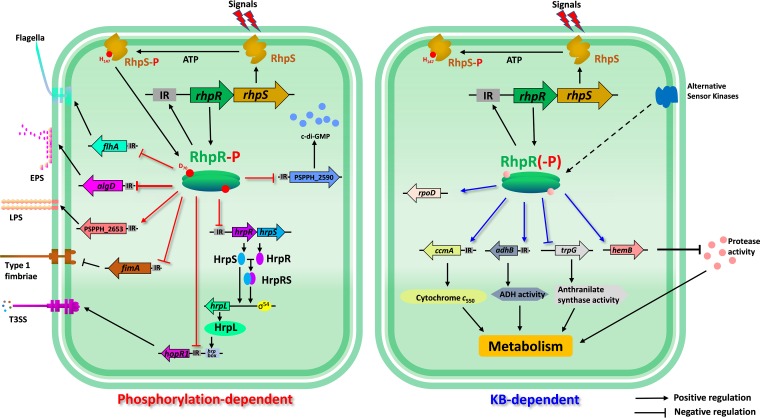FIG 8.
Schematic model of KB and phosphorylation-dependent RhpR regulation. Shown is a schematic diagram of RhpR involved in virulence factor and metabolism regulation of P. savastanoi. As a key TCS for regulating T3SS, histidine kinase RhpS phosphorylates RhpR by receiving an unknown signal. The transcription of the rhpRS operon is activated by phosphorylated RhpR. RhpR-P directly suppresses the hrpRS-hrpL-T3SS cascade, effector gene hopR1, swimming, and biofilm, EPS, and c-di-GMP production, but improves twitching motility and LPS production, thus regulating the pathogenicity of P. savastanoi. When cultured in KB, RhpR enhances the production of cytochrome c550 and alcohol dehydrogenase activity, while it negatively regulates protease activity and anthranilate synthase activity. Strikingly, the regulatory functions of RhpR found in KB are all significantly reduced or even disappear in MM, indicating the presence of other kinase(s) or regulator(s) that regulate RhpR under the KB condition.

